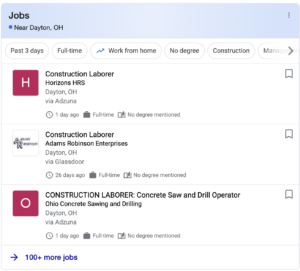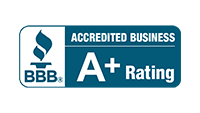
While you always want to value the quality of the applicants over the quantity, there are ways to reach more of your desired audience. So how do you do this, without individually messaging potential candidates via LinkedIn? The answer – and the implementation – is pretty simple: SEO for job postings.
Whether you are individually posting on job boards or streamlining the process with an ATS (Applicant Tracking System), search engine optimization will help your job openings rank higher in search results.
While many are intimidated by the prospect of optimizing their job postings, it doesn’t have to be that way. By using simple techniques like keywords and backlinks, you can optimize your job posting for search engines step-by-step.
Be Smart With Your Keywords
#1 – Use relevant keywords
We get it. You want to be creative, and you want your job posting to stand out among the masses. But no one is looking for Search Engine Wizard, but they are searching for SEO Specialist.
While it’s encouraged to put your own spin on a job posting with a humorous tone or fun closing line, you want to avoid gimmicky buzzwords that have become popular in job descriptions. On the surface, these quirky additions to a job description may seem like a good idea. However, candidates see them as outdated and desperate.
In terms of SEO for job posting, most job seekers search for a specific title and are not looking to be your new wizard. By choosing the right keyword, you will get more experienced professionals to apply while also increasing the visibility of your job description.
Find relevant keywords
by brainstorming keywords pertinent to your job openings. You can use multiple free sources, including Keyword Tool, Answer The Public, and Google Keyword Planner. These tools will allow you to create a keyword list with your job title, synonyms, relevant searches, plus how many people a month search for a specific keyword in your location.
Once you have your keyword list, try to put them and their synonyms into your job description. This is one of the most effective ways to maximize your chance of being indexed by search engines without being censored for keyword stuffing.
Bonus tip: The body text of your job description should be around 500 words and contain unique content, plus bullet points and headers to make it easily readable.
Ultimately, there are two keywords that you should always include in your job description:
- The job title
- The location
If you’re looking to hire in a specific location, it’s absolutely necessary for local SEO purposes to put the job title and location (physical or remote) in:
- The job title
- The first paragraph
- URL
- Meta title
- Meta description
Then if someone searches for “x job in x location,” your job opening will be one of the first to pop up.
You might already know what to do with the first two bullet points, but not sure about the last three? Don’t worry; we tackle them head-on below.
#2 – Be smart about your job posting’s URL
It’s important to have a searchable URL and make the most of SEO for job posting. Here are the best practices for creating a job opening’s URL that does well in searches, as well as guides potential candidates to your careers page or microsite:
- Keep it relevant and straightforward (include your keywords)
- Don’t use numbers or special characters (unless it’s in your product or job description)
- Avoid using too many hyphens, it’ll make the URL too long.
Search engines and page viewers alike appreciate it when your URL is self-explanatory. This can improve your ranking and allow the anchor text (the text you embed a link in) to be similar to the actual URL. Keeping it short gives your job opening more chances of being indexed.
For example, if the job title is “UX ,” the job opening’s URL will become: “https://yourcompany.recruitee.com/o/software-developer/”
#3 – Optimize your job posting’s meta-titles and -descriptions
Meta titles and meta descriptions are the two fields that show up on a Search Engine Results Page (SERP). The meta title must be simple and straight to the point, allowing job seekers to know the job opening once they are interested in it. The meta description is the caption underneath the title, describing the web page’s content in more detail.
 It is essential to make a custom meta title and meta description for your job opening.
It is essential to make a custom meta title and meta description for your job opening.
With meta tags, you want to be as clear and concise as possible. Meta titles should be under 65 characters, and meta descriptions should be under 155 with your value proposition as an employer. You want a potential candidate to be able to quickly glance at your job opening and know it’s what they are looking for.
Don’t make the first words your company name unless you are sure that people will be searching for you, specifically. A clear and concise title and description should do the trick in most cases.
If you are struggling to start, recreate the candidate journey by searching the job title on Google and looking at what shows up in the first position. What title are competitors using? How much information do they include in the meta description? This will help you understand what candidates are looking for and guide the creation of your meta title and description.
Bonus tip: make your page stand out by including information such as salary, location, contract type, and department. It also helps to include a Call to Action (CTA) such as ‘Apply now’ to encourage candidates to visit your website.
Take Advantage of Backlinks
Backlinking is the process of placing your link on other reputable sites, therefore “linking back” to your original site. This helps with SEO for job posting as it will increase your domain authority and show Google you are a trustworthy website and source.
Here are some easy steps you can take to increase your backlink profile:
#4 – Share your job opening on social media
Search engines look into traffic and shares to generate an algorithm for search results. Hence, the more the job opening is shared, the better it will rank in relevant searches.
Just remember, there are always rules to each social media platform. Here is a quick overview of SEO for job posting best practices on social media:
- Share the job’s short URL consistently across all platforms.
- Make the content engaging by writing original copy with your company’s specific voice. Think about including polls or questions to encourage engagement.
- Include photos or videos of current employees or your workplace to capture the attention of your audience.
Social media often allows you not only to target younger audiences but also allows your job opening to be viewed by increasingly more professionals in your followers’ extended networks.
This allows them to share your job opening with like-minded professionals. LinkedIn, for instance, has a high domain authority and is a great way to connect candidates and hiring managers. The more sharing, the higher the ranking and the better your SEO for job postings will become.
#5 – Post your job opening on high-traffic job boards
Job boards like Indeed and ZipRecruiter, among many others, rank high and are deemed a reputable source by Google. Posting your job listing on them will lead to more traffic and a strong backlink profile, increasing the possibility of higher ranking for your job description.
#6 – Write a blog post about your culture, hiring process, employee spotlights…
Give potential candidates an inside look into your company. Explain to them why they should want to work for you.
For example, you could share a closer look at your hiring process on your blog or invite current employees to share their thoughts in a blog post. You could also answer frequently asked questions and link back to your careers site.
#7 – Put a link to your careers site on your own website
If your website gains a lot of traffic, not only will job seekers know you are looking, but it will give your careers site one more credible backlink for SEO, as well.
#8 – Get featured on Google for Jobs
Google for Jobs can be a great tool to increase visibility for your job opening. Google is working with job boards, showing jobs that meet candidates’ search criteria. It will display your company’s name, job title, job description, location, and salary (if included). This way, eligible candidates can quickly decide whether your opening is relevant for them.
 To be visible on Google for Jobs, you need to include specific HTML tags that make your page easier to scan for search engines. Plus, your page needs to be indexable and follow the SEO practices mentioned above to show on Google for Jobs.
To be visible on Google for Jobs, you need to include specific HTML tags that make your page easier to scan for search engines. Plus, your page needs to be indexable and follow the SEO practices mentioned above to show on Google for Jobs.
Get Our Recruitment Marketing Guide
Combine all of these tips and tricks for SEO for job posting to become more searchable and appear on the first page of Google. This will ensure suitable candidates want to check out your job openings and become a valuable part of your team. It’s comforting to know that if the right candidate is seeking you out, they can find you.
Find more recruitment marketing methods to jump-start your hiring efforts by downloading our guide, “Give Your Recruiting Efforts A Boost.”





